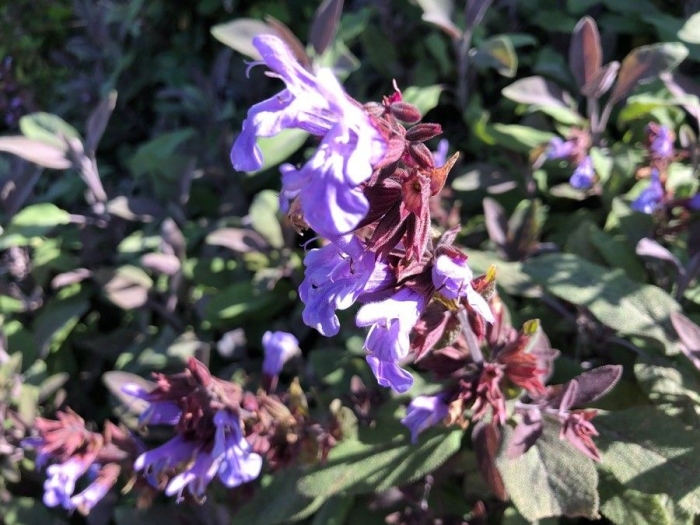Common Sage
(Salvia officinalis)
Common Sage (Salvia officinalis)
/
/

jean-françois Daure
CC BY-SA 4.0

























































Estimated Native Range
Summary
Common Sage is valued for its culinary and medicinal properties, with leaves that can be used fresh or dried in a variety of dishes. The plant is also appreciated for its ornamental qualities, including its variegated foliage, which can feature purple, rose, cream, and yellow hues. It is commonly used in herb gardens, borders, and as a ground cover. Sage thrives in full sun and requires well-drained soil, tolerating drought once established. Overwatering or poor drainage can lead to root rot. It is generally low-maintenance but can be susceptible to fungal diseases in humid conditions. Pruning after flowering can help maintain a compact shape and prevent legginess.CC BY-SA 4.0
Plant Description
- Plant Type: Shrub
- Height: 2-2.5 feet
- Width: 2-2.5 feet
- Growth Rate: Moderate
- Flower Color: Purple
- Flowering Season: Summer
- Leaf Retention: Evergreen
Growth Requirements
- Sun: Full Sun
- Water: Low, Medium
- Drainage: Medium, Slow
Common Uses
Bee Garden, Bird Garden, Border Plant, Butterfly Garden, Deer Resistant, Drought Tolerant, Edible*Disclaimer: Easyscape's listed plant edibility is for informational use. Always verify the safety and proper identification of any plant before consumption., Fragrant, Groundcover, Hummingbird Garden, Low Maintenance, Potted Plant, Rabbit Resistant, Rock Garden, Salt Tolerant, Showy Flowers, Street Planting
Natural Habitat
Native to the Mediterranean region, particularly found in dry, calcareous soils on hillsides and scrubby areas
Other Names
Common Names: Kitchen Sage , Garden Sage , Culinary Sage , Echter Salbei , Sauge Officinale , Echte Salie , Kryddsalvia
Scientific Names: Salvia officinalis , Betonica brachyodonta , Salvia officinalis f. lavandulifolia , Salvia officinalis subsp. minor , Salvia officinalis var. lavandulifolia
GBIF Accepted Name: Salvia officinalis L.